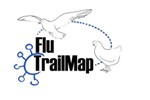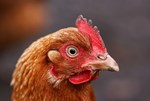Professor Javier Guitian
Department: Veterinary Epidemiology, Economics & Public Health Group
Campus: Hawkshead
Research Groups: Pathogen Flow in Ecosystems, Sustainable Food Systems, Food Safety, Antimicrobial Resistance, IRLFS (Research Programme)
Research Centres: Veterinary Epidemiology, Economics and Public Health
Javier is Professor of Veterinary Public Health within the Veterinary Epidemiology, Economics and Public Health Group in the Department of Pathobiology and Population Sciences, he leads the RVC Food Safety research group.
Javier obtained a veterinary degree and a PhD in veterinary epidemiology from the Universidad de Santiago de Compostela, Spain. He also holds an MSc in data analytics. Before joining the RVC as a lecturer in population medicine in 2002, Javier worked in the private sector for four years, focusing on diagnostics and herd health in Spain. Concurrently, he lectured part-time at the University of Porto in Portugal. In 2010, he was appointed Professor of Veterinary Public Health.
Javier serves as a consultant epidemiologist to the UK Animal and Plant Health Agency. He acts as the Head of the RVC’s FAO Reference Centre in Veterinary Epidemiology and as the Institute Lead of the WOAH Collaborating Centre in Risk Analysis and Modelling. Since early 2025, he supports the FAO Secretariat for the Global Eradication of Peste des Petits Ruminants (PPR), leading its epidemiological work.
Javier is a Graduate Statistician of the Royal Statistical Society and a Fellow of the Institute of Food Science and Technology. He holds an honorary research associate position at the Social Sciences Research Institute (INCISO) of Universidad Mayor de San Simon, Bolivia.
Javier conducts applied research on a range of topics across the animal and human health spectrum, mostly focusing on zoonotic diseases and food safety. His work combines epidemiological studies in livestock and human populations and analysis of animal and public health surveillance data. Javier is involved in research in the UK, India, Rwanda, Jordan, Peru and Bolivia. Ongoing projects include:
- Modelling biological hazards in the dairy chains of Andhra Pradesh to inform food safety policy
- Control of brucellosis in dairy herds in Rwanda
- Design and testing of interventions to reduce MERS-CoV infection risk in Jordan
- Food safety, consumer preferences and governance in the supply of meat to urban markets in Peru
- Reducing COVID-19 transmission in food markets in Peru and Bolivia
- Improved decision making for control of Johne’s disease in UK dairy herds
Together with Prof. Joanne Webster, he is currently supporting FAO with the development of technical guidelines for the surveillance of endemic zoonoses in the animal source.
For a full list of publications click here.
Nunney E, Crotta M, van Winden S, Bond K, Green M, Guitian J. Unravelling transmission of Mycobacterium avium subspecies paratuberculosis to dairy calves: results of a lifelong longitudinal study. Prev Vet Med. 2023 Sep 9;219:106022. doi: 10.1016/j.prevetmed.2023.106022. Epub ahead of print. PMID: 37738751.
Guitian J, Arnold M, Chang Y, Snary EL. Applications of machine learning in animal and veterinary public health surveillance. Rev Sci Tech. 2023 May;42:230-241. English. doi: 10.20506/rst.42.3366. PMID: 37232301.
Holt HR, Walker M, Beauvais W, Kaur P, Bedi JS, Mangtani P, Sharma NS, Gill JPS, Godfroid J, McGiven J, Guitian J. Modelling the control of bovine brucellosis in India. J R Soc Interface. 2023 Mar;20(200):20220756. doi: 10.1098/rsif.2022.0756. Epub 2023 Mar 8. PMID: 36882115; PMCID: PMC9991488.
Holloway P, Gibson M, Nash S, Holloway T, Cardwell J, Al Omari B, Abu-Basha E, Mangtani P, Guitian J. A cross-sectional study of Q fever in Camels: Risk factors for infection, the role of small ruminants and public health implications for desert-dwelling pastoral communities. Zoonoses Public Health. 2023 May;70(3):238-247. doi: 10.1111/zph.13019. Epub 2023 Jan 5. PMID: 36601879.
Nunney E, Crotta M, van Winden S, Bond K, Green M, Guitian J. Effect of tuberculin skin testing on serological results against Mycobacterium avium ssp. paratuberculosis (MAP): Evidence of distinct effects in MAP-infected and noninfected cows. J Dairy Sci. 2022 Oct;105(10):8354-8363. doi: 10.3168/jds.2021-21753. Epub 2022 Aug 31. PMID: 36055833.
Holloway P, Gibson M, van Doremalen N, Nash S, Holloway T, Letko M, Cardwell JM, Al Omari B, Al-Majali A, Abu-Basha E, Mangtani P, Munster VJ, Guitian J. Risk Factors for Middle East Respiratory Syndrome Coronavirus Infection among Camel Populations, Southern Jordan, 2014-2018. Emerg Infect Dis. 2021 Sep;27(9):2301-2311. doi: 10.3201/eid2709.203508. PubMed PMID: 34423762; PubMed Central PMCID: PMC8386791.
Modelling habitat suitability in Jordan for the cutaneous leishmaniasis vector (Phlebotomus papatasi) using multicriteria decision analysis. Takahashi EA, Masoud L, Mukbel R, Guitian J, Stevens KB.PLoS Negl Trop Dis. 2020 Nov 23;14(11):e0008852. doi: 10.1371/journal.pntd.0008852.
Control of Brucella melitensis in endemic settings: a simulation study in the Nile Delta, Egypt. Mohammed Hegazy Y, Schley D, Ridler A, Beauvais W, Musallam I, Guitian J.Transbound Emerg Dis. 2020 Oct 28;. doi: 10.1111/tbed.13897.
Viraemic pigs entering the food chain are the most likely source of hepatitis E virus (HEV) in pork meat: Modelling the fate of HEV during slaughtering of pigs. Food Control. Volume 121, March 2021, 107662. doi: 10.1016/j.foodcont.2020.107662.
Invasive alien species and disease risk: An open challenge in public and animal health. Chinchio E, Crotta M, Romeo C, Drewe JA, Guitian J, Ferrari N. PLoS Pathog. 2020 Oct;16(10):e1008922. doi: 10.1371/journal.ppat.1008922.
Mycobacterium avium paratuberculosis infection of calves - The impact of dam infection status. Patterson S, Bond K, Green M, van Winden S, Guitian J. Prev Vet Med. 2020 Aug;181:104634. doi: 10.1016/j.prevetmed.2019.02.009.
"We never boil our milk, it will cause sore udders and mastitis in our cows"- consumption practices, knowledge and milk safety awareness in Senegal. Chengat Prakashbabu B, Cardwell JM, Craighead L, Ndour APN, Yempabou D, Ba E, Bada-Alambedji R, Akakpo AJ, Guitian J. BMC Public Health. 2020 May 20;20(1):742. doi: 10.1186/s12889-020-08877-1.
The prevalence and risk factors for human Brucella species infection in a cross-sectional survey of a rural population in Punjab, India. Mangtani P, Berry I, Beauvais W, Holt HR, Kulashri A, Bharti S, Sagar V, Nguipdop-Djomo P, Bedi J, Kaur M, Guitian J, McGiven J, Kaur P, Singh Gill JP, Grover GS, Kumar R. Trans R Soc Trop Med Hyg. 2020 Apr 8;114(4):255-263. doi: 10.1093/trstmh/trz133.
Brucellosis in dairy herds: A public health concern in the milk supply chains of West and Central Africa. Musallam I, Ndour AP, Yempabou D, Ngong CC, Dzousse MF, Mouiche-Mouliom MM, Feussom JMK, Ntirandekura JB, Ntakirutimana D, Fane A, Dembele E, Doumbia A, Ayih-Akakpo AAPS, Pato P, Pali M, Tapsoba ASR, Compaore GM, Gagara H, Garba AI, Chengat Prakashbabu B, Craighead L, Takahashi E, McGiven J, Nguipdop-Djomo P, Mangtani P, Alambédji-Bada R, Akakpo AJ, Guitian J. Acta Trop. 2019 Sep;197:105042. doi: 10.1016/j.actatropica.2019.105042.
Rapidly assessing the risks of infectious diseases to wildlife species. Beauvais W, Zuther S, Villeneuve C, Kock R, Guitian J. R Soc Open Sci. 2019 Jan;6(1):181043. doi: 10.1098/rsos.181043.
The transmission dynamics of Campylobacter jejuni among broilers in semi-commercial farms in Jordan. Neves MI, Malkawi I, Walker M, Alaboudi A, Abu-Basha E, Blake DP, Guitian J, Crotta M. Epidemiol Infect. 2019 Jan;147:e134. doi: 10.1017/S0950268818003308.
Risk-based inspection as a cost-effective strategy to reduce human exposure to cysticerci of Taenia saginata in low-prevalence settings. Chengat Prakashbabu B, Marshall LR, Crotta M, Gilbert W, Johnson JC, Alban L, Guitian J. Parasites & vectors. 2018; 11(1):257.
Integrated cost-benefit analysis of tsetse control and herd productivity to inform control programs for animal African trypanosomiasis. Meyer A, Holt HR, Oumarou F, Chilongo K, Gilbert W, Fauron A, Mumba C, Guitian J. Parasites & vectors. 2018; 11(1):154.
A probabilistic approach to the interpretation of milk antibody results for diagnosis of Johne's disease in dairy cattle. Meyer A, Bond K, Van Winden S, Green M, Guitian J.Prev Vet Med. 2018 Feb 1;150:30-37. doi: 10.1016/j.prevetmed.2017.11.016.
Knowledge gaps in host-parasite interaction preclude accurate assessment of meat-borne exposure to Toxoplasma gondii.Crotta M, Limon G, Blake DP, Guitian J. International journal of food microbiology. 2017; 261:95-101.
Evidence for more cost-effective surveillance options for bovine spongiform encephalopathy (BSE) and scrapie in Great Britain. Wall BA, Arnold ME, Radia D, Gilbert W, Ortiz-Pelaez A, Stärk KD, Van Klink E, Guitian J. Euro surveillance : bulletin Europeen sur les maladies transmissibles. European communicable disease bulletin. 2017; 22(32).
Cross-Sectional Study of Toxoplasma gondii Infection in Pig Farms in England. Limon G, Beauvais W, Dadios N, Villena I, Cockle C, Blaga R, Guitian J. Foodborne pathogens and disease. 2017; 14(5):269-281.
Quantitative risk assessment of Campylobacter in broiler chickens–Assessing interventions to reduce the level of contamination at the end of the rearing period. Crotta M, Georgiev M, Guitian J. Food control. 2017 May; 75:29.
Towards an integrated food safety surveillance system: a simulation study to explore the potential of combining genomic and epidemiological metadata. Hill AA, Crotta M, Wall B, Good L, O'Brien SJ, Guitian J. Royal Society open science. 2017; 4(3):160721.
Effect of enhanced biosecurity and selected on-farm factors on Campylobacter colonization of chicken broilers. Georgiev M, Beauvais W, Guitian J. Epidemiology and infection. 2017; 145(3):553-567.
Consumers' behavior in quantitative microbial risk assessment for pathogens in raw milk: Incorporation of the likelihood of consumption as a function of storage time and temperature. Crotta M, Paterlini F, Rizzi R, Guitian J. Journal of dairy science. 2016; 99(2):1029-38.
Assessment of animal African trypanosomiasis (AAT) vulnerability in cattle-owning communities of sub-Saharan Africa. Holt HR, Selby R, Mumba C, Napier GB, Guitian J. Parasites & vectors. 2016; 9(1):53.
Vaccination control programs for multiple livestock host species: an age-stratified, seasonal transmission model for brucellosis control in endemic settings. Beauvais W, Musallam I, Guitian J. Parasites & vectors. 2016; 9(1):55.
Knowledge, Attitudes, and Practices Associated with Brucellosis in Livestock Owners in Jordan. Musallam II, Abo-Shehada MN, Guitian J. The American journal of tropical medicine and hygiene. 2015; 93(6):1148-55.
Cross-sectional study of brucellosis in Jordan: Prevalence, risk factors and spatial distribution in small ruminants and cattle. Musallam II, Abo-Shehada M, Omar M, Guitian J. Preventive veterinary medicine. 2015; 118(4):387-96.
Interventions for avian influenza A (H5N1) risk management in live bird market networks. Fournié G, Guitian J, Desvaux S, Cuong VC, Dung do H, et al. Proceedings of the National Academy of Sciences of the United States of America. 2013; 110(22):9177-82.
Javier is involved with undergraduate and postgraduate teaching in epidemiology, food safety and public health. He regularly contributes to international training courses and in the last 15 years, he has designed and taught courses in Eastern Europe, Asia, Africa, Latin America and the Caribbean. Javier co-led the OIE Veterinary Education Twinning Programme between the RVC and the Jordan University for Science and Technology, one of the first education twinning programs endorsed by the World Organisation for Animal Health (WOAH). He was involved in the design and delivery of the China Field Epidemiology Training Program for Veterinarians since its inception in 2011, contributing to the training of five cohorts of veterinary epidemiologists in China over a 10 year period. Between 2020 and 2023, Javier supported FAO with the development and implementation of field epidemiology training programs for veterinarians in Jordan, Malaysia, Philippines and Turkey.
Javier is actively involved in promoting epidemiology and its potential contribution to public health with the general public through different outreach activities. He volunteers for the statisticians for society program of the Royal Statistical Society, currently supporting the Indoamerican Refugee and Migrant Organization (IRMO).
-
AMFORA: Applying a One Health systems approach to formulate strategies for mitigating risk to human health of AMR in Aquaculture
The aim of AMFORA is to use a ‘systems-thinking’ approach to map aquaculture systems and identify hotspots for the emergence and selection of resistance and human exposure to antimicrobials and antimicrobial-resistant organisms.
This will enable the identification of potential drivers of AMU and interventions to reduce AMU.
-
Control of brucellosis in dairy herds in Rwanda
We are working with overseas partners to research the frequency and distribution of brucellosis among dairy herds, and longitudinal studies to identify Brucella species causing infection in dairy herds.
Brucellosis is the world's most widespread zoonosis, imposing a substantial burden on the livelihoods of poor people as a result of human disease and reduced livestock productivity. However, brucellosis is rarely a priority for health systems and for this reason the WHO classifies brucellosis as a "neglected endemic zoonosis"
-
FluTrailMap (Poultry) consortium
The project brings together leading researchers at top UK scientific organisations to better understand and mitigate the threats of bird flu viruses to the poultry sector.
-
Foodborne diseases and public health governance: Comparing food safety, consumer preferences and governance in the supply of meat to urban markets.
Foodborne diseases are a major cause of morbidity, mortality and undernutrition including micronutrient deficiencies, with animal-derived food posing the highest risk for consumers in low and middle-income countries such as Peru. Traditional food markets are still the dominant distribution channel for locally produced food in developing countries and the main food source for most poor urban households. The research explores the safety of meat supplied through traditional food markets that serve poor urban consumers.
-
Genetic and non-genetic factors in Campylobacter levels in poultry
Researchers explored variation at specific positions in chickens’ genome and their association with Campylobacter in the birds’ guts. Campylobacteriosis exerts profound societal and economic costs to the UK and other countries. The World Health Organization has estimated that Campylobacter causes 95 million illnesses, 21,000 deaths and loss of 2.1 million disability-adjusted life years globally. In the UK alone, there were 63,946 laboratory-confirmed human cases in 2017.
The study concluded that, although there are genetic factors that influence Campylobacter colonisation, these factors play a relatively minor role.
-
Responding to the challenge of MERS-CoV: Development and testing of interventions to reduce risk among Bedouin populations in southern Jordan
Middle Eastern Respiratory Syndrome coronavirus (MERS-CoV) is an emerging infectious disease first identified in Jordan and Saudi Arabia in 2012. Clinical cases present as an acute respiratory infection with rapid onset pneumonia and, in many cases, death.
In this interdisciplinary research, we study the biological and sociocultural contexts of the disease among at-risk Bedouin populations in southern Jordan. In particular, we are seeking to understand which individuals, or camels, should be targeted for future vaccination, the correct seasons for the deployment of such vaccines and the sociocultural issues that are driving the infection.






